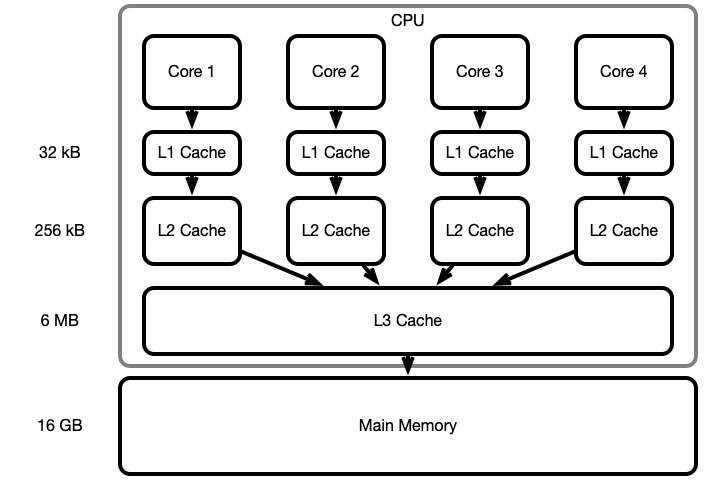Lecture 25: Atomic Locks
COSC 273: Parallel and Distributed Computing
Spring 2023
Announcements
Homework 03 is finalized
- no new questions
- due next Friday
Today
- More Lock Implementations
Last Time:
- Peterson lock implementation
peterson-lock.zip
- disappointment
- it didn’t achieve mutual exclusion!
Peterson Lock Code
class PetersonLock {
private boolean[] flag = new boolean[2]; private int victim;
public void lock () {
int i = ((PetersonThread)Thread.currentThread())
.getPetersonId();
int j = 1 - i;
flag[i] = true; victim = i;
while ((flag[0] && flag[1]) && victim == i) {};}
public void unlock () {
int i = ((PetersonThread)Thread.currentThread()).getPetersonId();
flag[i] = false;}}
Memory Consistency!

volatile Variables
Java can make variables visible between threads:
- use
volatilekeyword - individual read/write operations to
volatileare atomic
Drawbacks:
-
volatilevariables are less efficient -
only single read/write operations are atomic
- e.g.
count++not atomic
- e.g.
- only primitive datatypes are visible
- if
volatile SomeClass..., only the reference is treated as volatile
- if
Making Variables Volatile
- In
PetersonLock-
flag: an array (object) can’t be volatile- replace with
boolean flag0, flag1
- replace with
victim
-
- In
LockedCountercount
Fixing Implementation
peteson-lock.zip
Finally!!!
What have we done?
-
Proven correctness of a lock
- idealized model of computation
- atomic read/write operations
- Implemented lock
- used Java to resemble idealized model
- Used lock
- saw expected behavior
Theory and practice converge!
Peterson: Good and Bad
The Good:
- It works!
- It only uses read/write operations!
The Bad:
- It only works with two threads!
- Ugly implementation
- need a separate
PetersonThreadto assign IDs
- need a separate
Question. How could we lock more simply?
Better Tech!
Use more advanced Atomic Objects!
Introducing the AtomicBoolean class:
-
var ab = new AtomicBoolean(boolean value)make anAtomicBooleanwith initial valuevalue -
ab.get()return the current value -
ab.getAndSet(boolean newValue)atomically set the value tonewValueand return the old value -
ab.compareAndSet(boolean expected, boolean new)atomically update to new if previous value wasexpectedand return whether or not the value was updated
A Simpler Lock?
Question. How could we use AtomicBooleans to design a simpler lock?
Test and Set Lock
Idea. An AtomicBoolean locked stores state of the lock:
-
locked.get() == trueindicates the lock is in use -
locked.get() == falseindicates the lock is free
Obtaining the lock:
- wait until
lockedisfalse, and set it totrue
Releasing the lock:
- set
lockedto false
TASLock in Code
import java.util.concurrent.atomic.AtomicBoolean;
public class TASLock implements SimpleLock {
AtomicBoolean locked = new AtomicBoolean(false);
public void lock () {
while (locked.getAndSet(true)) {}
}
public void unlock () {
locked.set(false);
}
}
- download
tas-locks.zip
Progress Guarantees
Question. Is TASLock deadlock-free? Starvation-free?
Alternative Implementation
Potential Issue:
-
getAndSetoperation is somewhat inefficient- slower than just
get
- slower than just
Test and Test and Set Lock:
- check if locked
- if not, attempt
getAndSet - return if successful
- if not, attempt
TTASLock Implementation
public class TTASLock implements SimpleLock {
AtomicBoolean locked = new AtomicBoolean(false);
public void lock () {
while (true) {
while (locked.get()) {};
if (!locked.getAndSet(true)) { return;}
}
}
public void unlock() { locked.set(false);}
}
Comparing Efficiency
tas-locks.zip